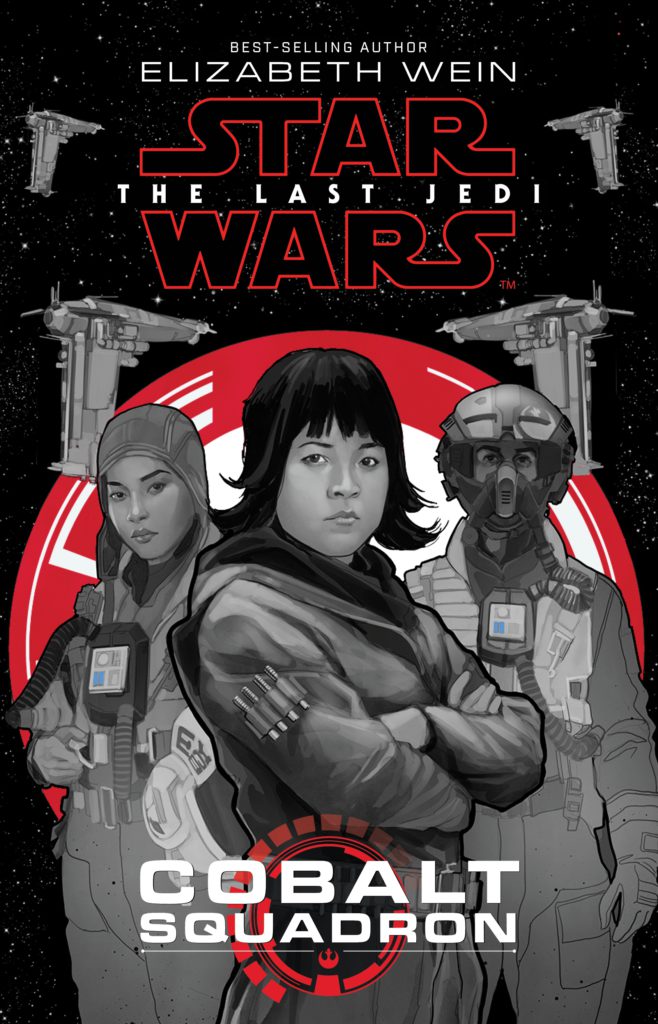Star Wars Novel Review: “Cobalt Squadron”
By now, most of the world has seen the eighth movie, The Last Jedi, in the massive Star Wars saga. If you happen to be one of the 12 people that hasn’t yet paid your visit to cinematic mecca in 2017, I suggest you do so now…or else you’re about to read lots and lots of spoilers. You’ve been warned.
A big part of the promotional build-up for the release of Star Wars: The Last Jedi was the exciting reveal of new characters that would be joining Rey, Finn and Poe. Key amongst the excitement of this announcement were sisters Rose and Paige Tico, respectively—Kelly Marie Tran and Veronica Ngo. But for those who have seen the actual film, their relationship was barely mentioned, the sum total of their sisterhood being a brief line and a shared relic from their home world.
In the film, the first major action sequence reveals the very cool, if not very slow, B-wing bombers. I’ll leave out specifics, but they aren’t in the movie long. Their mission does exist to give us a reason to meet Rose, who is serving on a separate ship from her sister, Paige, who in turn serves as a gunner on the previously mentioned bomber. After the successful yet costly mission ends, we are instantly sympathetic to Rose and her loss. Star Wars: Cobalt Squadron allows interested readers to expand on their connection.
Author Elizabeth Wein, known for her historical novels and thrillers, unveils the world of the Resistance’s B-Wing crew with unique qualifications; her personal interest in flying and aviation gives her access to the intricacies in the world of aircraft/warcraft. She even spent some time in a Canadian Lancaster bomber in preparation for the book. All these experiences provide the reader with a rather detailed account of a week-in-the-life of some of Star Wars’ peripheral actors. Whether or not that makes for a good sci-fi novel is up for debate.
The story follows a non-bombing reconnaissance mission where Rose and Paige share time on Hammer, part of the Cobalt Squadron of B-wing bombers. As said before, Paige operates the lower gun and bomb doors, while Rose’s job as flight engineer keeps her busy. Key to the mission’s success, as well as each job afterwards, is a “baffler”—a device that Rose jury-rigged to hide the large, slow B-wing’s energy signature. On their first mission, they pick up a small, strange craft which contains two refugees from the planet Atterra Bravo. They are fleeing the oppressive and deadly hand of the First Order which has enslaved their planet, stripped it of resources, and is on course to fully “murder” their world. Rose and Paige are sympathetic to their cause, as their involvement with the Resistance was motived by the same devastating occurrence.
Taking them to the Resistance base on D’Qar, General Organa sends her bomber squads back in order to facilitate a humanitarian mission to provide supplies to the starving population of Atterra Bravo while collecting more information about the atrocities being perpetrated by the evil First Order.
So as you can tell, there is enough “new-legacy” action in the book (characters, conflict and details) to make it a Star Wars novel, but between the sisters constantly having to confirm to each other their affection for one another and some long space battle descriptions, I quickly lost interest in the story.
Comparing it to the novelization of the characters from Inferno Squad, they seem flat and two-dimensional. In Cobalt, there is so much repetition in the telling of the multiple B-wing missions, as well as the dialogue between Rose and Paige, that it dominates the flow of the tale. With Inferno Squad, the characters were also new, but their interactions were significant to the story. Inferno Squad very carefully inserted itself in to the Star Wars mythology between key events—the destruction of the first Death Star and the events of Empire Strikes Back—but it didn’t rely on the film’s reputation for its own success. Cobalt also tries to develop itself without relying on that reputation, but it never really takes flight as a story of its own.
Honestly, it would have been better suited as a short episode of Forces of Destiny rather than an entire book. To be fair, the Disney Lucasfilm Press release is targeted to a younger audience between middle-grade and young-adult fiction, so there is that. But I don’t see why a story must be simple and redundant in order to appeal to the tastes of that demographic.
Where Cobalt succeeds is during its final chapters. As the book wraps up, we finally are told where in the Star Wars chronology it fits, what is happening in the SW universe while the events of Cobalt are taking place, and why Rose is apart from her sister in the opening scenes of The Last Jedi. Also, pertinent to the film, we come to understand why those massive B-wings just seemed to show up out of nowhere, why they are so slow, and what significance the necklace Rose and Paige wear has to their lives. Missing entirely, well, partially, is how the First Order is able to master the art of hyperspace tracking! It was suggested briefly, but then entirely dropped.
That detail alone could have helped to contribute to the significance of Cobalt Squadron in the expanded universe of Star Wars.


